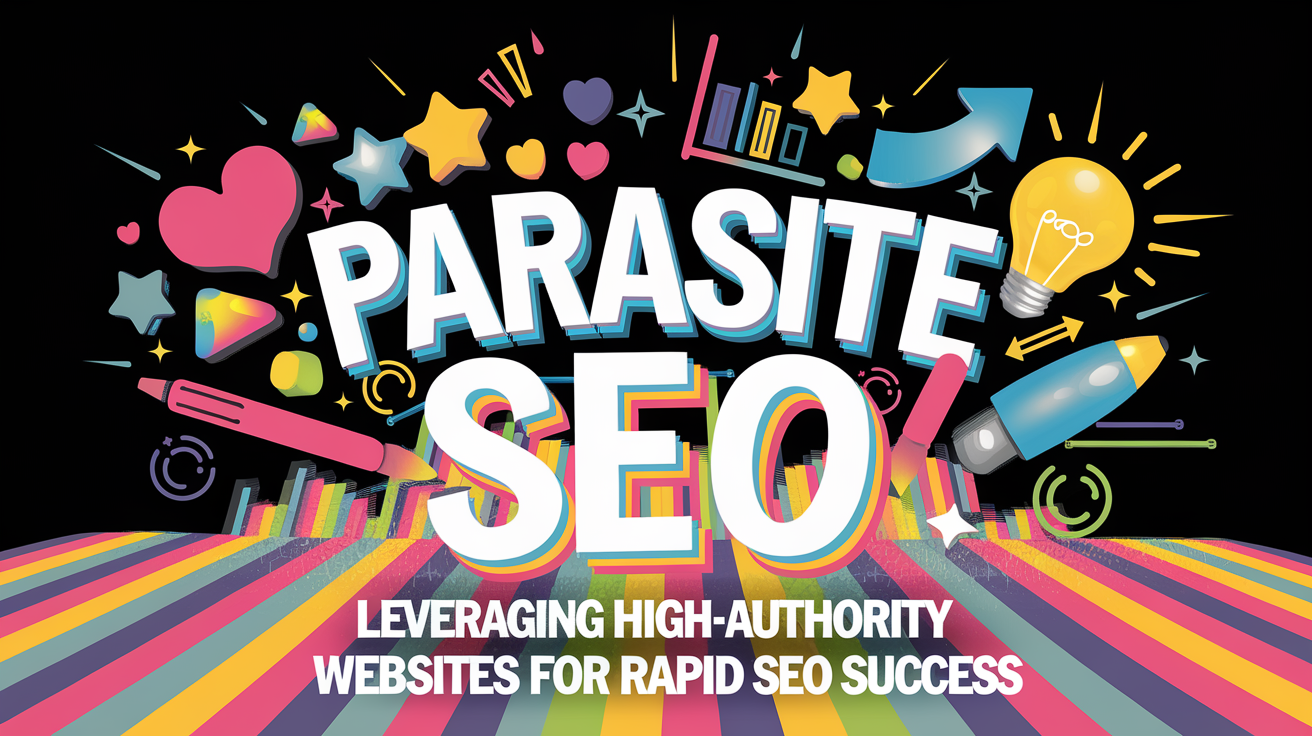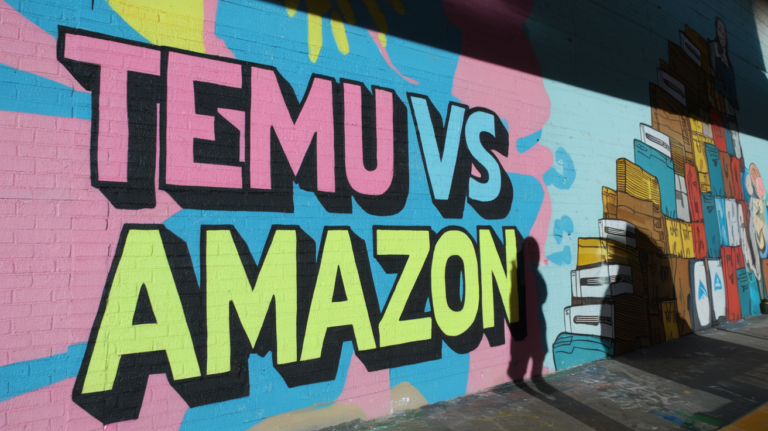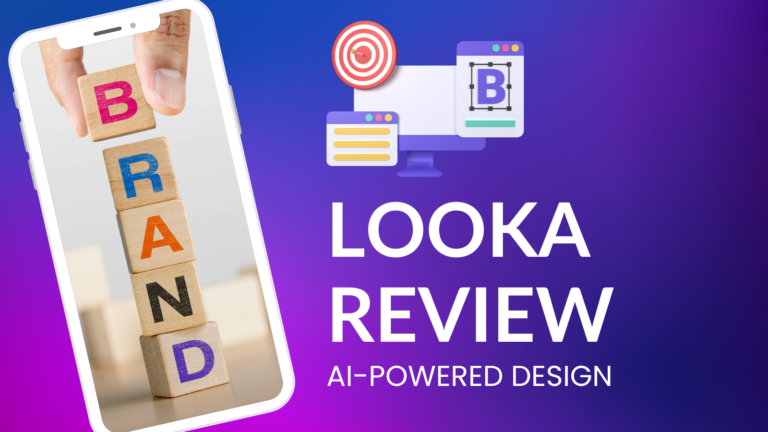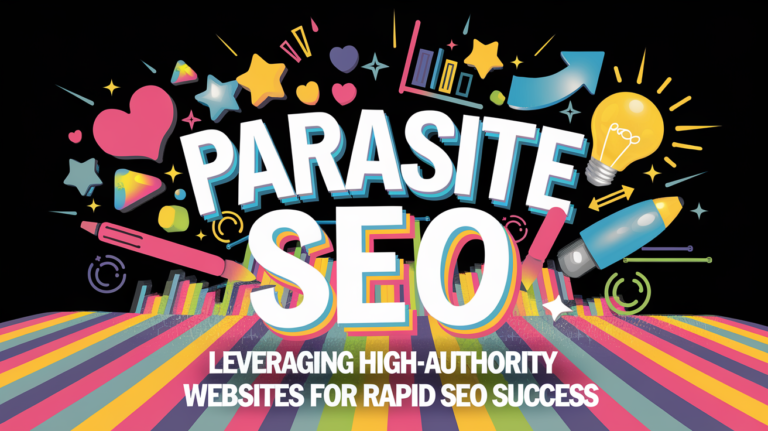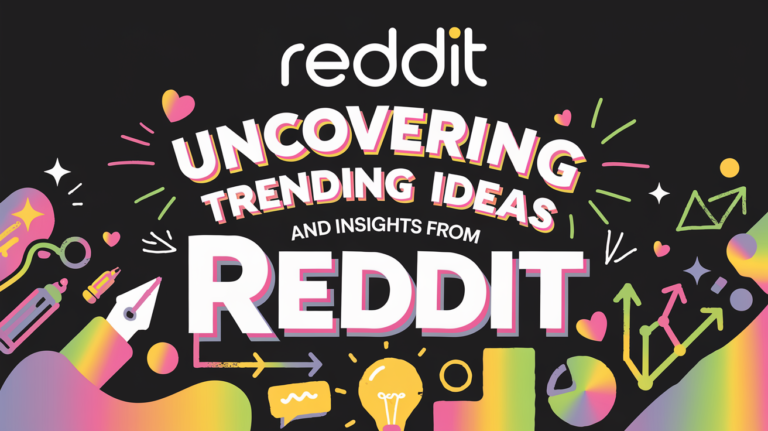Skills That Won’t Be Replaced By AI – A Human Edge In the Age of AI
Artificial intelligence fundamentally reshapes human skill value, making traditional expertise less economically relevant while elevating adaptability and emotional intelligence. Professionals must develop meta-skills like rapid learning and pattern recognition rather than deep vertical knowledge. Decisiveness under uncertainty becomes critical, requiring action at 70-80% confidence levels. Authentic relationship-building and trust creation emerge as irreplaceable human advantages that AI cannot replicate. Content creation shifts toward genuine storytelling and personalized engagement. Understanding these transformative dynamics reveals strategic pathways for thriving professionally.
Key Takeaways
- Prioritize adaptability and meta-skills over deep specialization as AI handles routine information processing and economic value shifts rapidly
- Develop decisiveness under uncertainty by taking calculated risks with 70-80% confidence rather than waiting for perfect information
- Cultivate emotional intelligence and relationship-building skills since authentic human connection cannot be replicated by artificial intelligence
- Master learning-how-to-learn as a core competency, using AI tools for structured feedback while focusing on quick proficiency gains
- Build trust through vulnerable storytelling and genuine engagement rather than broadcasting, as emotional connections become increasingly scarce and valuable
- Develop nuanced communication skills that go beyond data processing to interpret cultural context, sarcasm, and emotional undertones
The Declining Value of Crystallized Knowledge in the AI Era
How greatly has artificial intelligence altered the fundamental economics of human knowledge? The traditional value of “crystallized knowledge”—accumulated facts and established expertise—is rapidly diminishing as AI systems demonstrate superior information processing and generation capabilities.
This shift represents a fundamental disruption to how societies have historically valued human expertise. By 2030, artificial intelligence is projected to outperform humans in most economically valuable tasks, forcing a complete reevaluation of which skills remain competitively advantageous.
The increasing complexity of modern problems demands new competencies that extend beyond mere knowledge retention, emphasizing adaptability and dynamic problem-solving over static informational mastery.
Rising System Complexity and the Need for Fundamental Skill Shifts
As artificial intelligence assumes control over routine information processing, the fundamental architecture of modern systems grows exponentially more complex, creating multifaceted challenges that resist traditional problem-solving approaches.
This complexity amplifies across interconnected networks, supply chains, and digital ecosystems, demanding unprecedented adaptability from human professionals. Traditional specialized expertise becomes insufficient when systems operate beyond individual comprehension.
Workers must develop meta-skills that transcend specific domains, emphasizing pattern recognition across diverse contexts rather than deep vertical knowledge. The economic landscape increasingly rewards those who can navigate ambiguity, synthesize disparate information streams, and make effective decisions within rapidly evolving, interconnected systems requiring continuous learning and strategic flexibility.
Emotional Intelligence: The Human Connection AI Cannot Replicate
Intuition lies at the heart of emotional intelligence—a distinctly human capacity that AI systems can’t truly replicate. While AI can recognize patterns and simulate responses, it lacks genuine understanding of emotions that stem from lived experience, consciousness, and empathy.
Your ability to read a room, detect sarcasm, or comfort a distressed colleague comes from authentic emotional awareness. You understand nuances in tone, cultural context, and unspoken meanings that AI algorithms miss entirely.
Practical Development Strategies for Emotional Intelligence
Building Authentic Emotional Awareness:
- Practice active listening by focusing entirely on the speaker without planning your response
- Develop empathy by regularly asking “How might this person be feeling?” in interactions
- Learn to recognize your own emotional triggers and responses before they affect others
- Study cultural contexts and social cues specific to your industry and geographic region
Reading Subtle Social Dynamics:
- Pay attention to body language, facial expressions, and vocal tone changes
- Notice what people don’t say as much as what they do say
- Observe group dynamics and power structures in meetings and social situations
- Practice perspective-taking exercises to understand different viewpoints
As workplaces evolve, your emotional intelligence skills become increasingly valuable. You’ll build trust, resolve conflicts, and create psychological safety in ways machines cannot. Your capacity for empathetic listening, ethical judgment, and meaningful connection represents the irreplaceable human element in our increasingly automated world.
Established sales relationships thrive on authentic conversations that create emotional resonance with customers that machines simply cannot achieve. Variables such as sarcasm and biases present significant challenges for AI systems attempting to interpret human emotions.
Creative Problem-Solving: Where Human Imagination Outshines Algorithms
While AI can process vast amounts of data and identify patterns, it fundamentally lacks the creative spark that makes human problem-solving so powerful. Your ability to draw on lived experiences, intuition, and emotional intelligence gives you an edge when facing novel challenges.
You’re uniquely equipped to think “outside the box,” making connections between seemingly unrelated concepts—something AI struggles with. When you encounter ambiguity, you can adapt your approach, shift perspectives, and explore multiple possibilities simultaneously.
Developing Creative Problem-Solving Skills
Cultivating Divergent Thinking:
- Practice brainstorming sessions where you generate 20+ solutions before evaluating any
- Regularly expose yourself to diverse fields, cultures, and perspectives outside your expertise
- Use techniques like “worst possible idea” exercises to break conventional thinking patterns
- Engage in activities that combine unrelated concepts (art + technology, history + business)
Building Pattern Recognition Across Domains:
- Study successful solutions from completely different industries
- Maintain a “solution journal” documenting creative approaches you encounter
- Practice analogical thinking by asking “What does this remind me of from other fields?”
- Develop mental models that can transfer between contexts
Your creative problem-solving isn’t constrained by training data or existing patterns. Unlike AI, you employ divergent thinking to explore multiple solutions before determining the best approach to complex problems. You can break conventional rules, imagine entirely new solutions, and incorporate ethical considerations into your decisions.
Agency Under Uncertainty: Acting Decisively in Ambiguous Situations
Decisiveness emerges as a critical differentiator when professionals face incomplete information and compressed decision-making timelines. Organizations increasingly value individuals who demonstrate initiative without waiting for full clarity or explicit permission.
This skill becomes essential as AI systems handle routine decisions, leaving humans to navigate complex, ambiguous scenarios where perfect information remains unavailable.
Key Behaviors for Developing Agency Under Uncertainty
The 70-80% Certainty Threshold:
- Take calculated risks with 70-80% confidence rather than seeking perfect certainty
- Initiate projects and solutions proactively without explicit authorization
- Make rapid course corrections based on emerging feedback and changing conditions
- Learn to distinguish between critical information gaps and marginal details
Practical Implementation:
- Set decision deadlines to prevent analysis paralysis
- Develop rapid information gathering techniques using AI tools
- Create feedback loops for quick course corrections
- Build comfort with reversible vs. irreversible decisions
This approach positions professionals to thrive in dynamic environments where speed often trumps perfection.
Adaptable Leadership: Guiding Teams Through Uncertainty
In today’s rapidly changing workplace, adaptable leadership stands as a cornerstone skill that AI simply can’t replicate. While algorithms excel at processing data, they lack the essential human qualities needed to navigate uncertainty effectively.
Building Adaptable Leadership Capabilities
Self-Awareness and Empathy Development:
- Regularly seek 360-degree feedback from team members, peers, and supervisors
- Practice transparent communication about your own uncertainties and learning process
- Develop emotional regulation techniques for high-stress situations
- Build cultural competency to lead diverse teams effectively
Flexibility and Resilience Training:
- Embrace uncertainty as an opportunity rather than a threat
- Practice scenario planning and contingency thinking
- Develop a solution-focused mindset that transforms challenges into growth opportunities
- Learn to communicate transparently about unknowns while maintaining team confidence
You’ll need self-awareness and empathy to build trust with your team—something no AI can achieve. Your flexibility allows you to pivot quickly when circumstances change, while your resilience helps you bounce back from setbacks and maintain perspective.
Unlike AI, you can make intuitive decisions with incomplete information, create the psychological safety teams need to take risks, and inspire through genuine connection. Effective leaders distinguish between technical and adaptive challenges when guiding their organizations through uncharted territory.
Nuanced Communication: Beyond Words and Data
Nuanced communication represents another sphere where human capabilities outshine artificial intelligence. While AI can process vast amounts of data, it falters when interpreting contextual subtleties, sarcasm, emotional undertones, and cultural references that you intuitively understand.
Developing Advanced Communication Skills
Reading Beyond the Words:
- Study nonverbal communication patterns: facial expressions, body language, vocal tone
- Practice detecting implied meanings and subtext in conversations
- Learn to recognize cultural communication styles and adapt accordingly
- Develop sensitivity to power dynamics and social hierarchies in communication
Contextual Interpretation:
- Build knowledge of industry-specific jargon and cultural references
- Practice translating between different communication styles (technical to executive, formal to casual)
- Learn to gauge audience engagement and adjust your approach in real-time
- Develop skills in conflict de-escalation and diplomatic communication
Your emotional intelligence gives you an edge that machines can’t replicate. You can detect the unspoken meanings behind facial expressions, body language, and tone of voice—elements that comprise the majority of human communication.
Human emotional intelligence remains our unique superpower—reading faces, gestures, and tones where AI sees only data. You also navigate cultural sensitivities and adapt your approach based on implicit social cues. Even today’s most advanced models like GPT-4 Turbo and Gemini struggle with implicit meanings beyond literal text.
Complex Decision-Making in Ambiguous Situations
Despite significant advances in automation, complex decision-making in ambiguous situations remains a distinctly human domain. When faced with unclear information, statistical rarities, or evolving environments, your intuition and experience provide depth that algorithms can’t replicate.
Strengthening Decision-Making in Ambiguity
Developing Judgment Under Uncertainty:
- Practice ethical reasoning frameworks for complex scenarios
- Build experience with incomplete information through case studies and simulations
- Develop comfort with “good enough” decisions that can be improved iteratively
- Learn to incorporate moral reasoning and accountability into decision processes
Managing Accountability and Transparency:
- Document decision-making processes and rationales
- Build systems for tracking decision outcomes and learning from results
- Develop skills in explaining complex decisions to stakeholders
- Create feedback mechanisms for continuous improvement in judgment
You navigate the interplay of contextual factors, cultural sensitivities, and ethical considerations that AI systems struggle to comprehend. While machines excel at processing clear data, they falter with vague instructions or multiple interpretations.
Additionally, AI’s “black box” nature creates accountability issues in critical scenarios where understanding the “why” behind decisions matters. Your adaptability allows you to process unfamiliar situations with incomplete information and make judgment calls that incorporate moral reasoning.
Mastering the Art of Learning How to Learn
Beyond mastering specific technical competencies, the most critical skill for maneuvering an AI-driven economy becomes the meta-skill of learning itself—the ability to rapidly acquire, synthesize, and apply new knowledge across diverse domains.
Building Learning Agility
Flexible Learning Strategies:
- Embrace lifelong learning through MOOCs, micro-learning platforms, and AI-powered personalized learning paths
- Practice the learn-unlearn-relearn cycle, mixing formal education with experiential learning
- Develop intellectual curiosity and openness to change—71% of workers want to better understand AI’s impact on their roles
- Use job rotations and lateral moves to build diverse skill sets
Optimizing Learning Efficiency:
- Structure environments for uninterrupted focus and concentrated learning sessions
- Target 70-80% proficiency quickly rather than pursuing perfection
- Leverage AI assistance for personalized learning paths and skill decomposition
- Create feedback loops for continuous improvement and course correction
This meta-skill enables professionals to maintain relevance as job requirements evolve at unprecedented speeds. The learning process benefits from AI tools serving as personalized tutors, breaking complex skills into manageable components and providing structured feedback loops.
In today’s environment, where 50% of employees will need reskilling by 2025, your ability to continuously reinvent yourself separates humans from machines. By 2030, 375 million workers may need to switch occupational categories and learn entirely new skills.
Leveraging AI Tools for Maximum Productivity and Output Quality
While learning how to learn provides the foundation for adaptation, the practical application of this meta-skill now hinges on one’s ability to strategically deploy AI tools to amplify human capabilities.
Mastering AI Tool Proficiency
Essential AI Tools for Professionals:
- Conversational AI assistants for content creation and problem-solving
- Automation tools for workflow optimization
- AI-powered data analysis platforms for pattern recognition
- Collaborative AI systems for enhanced decision-making
Advanced AI Integration Techniques:
- Master tool chaining—connecting multiple AI systems to achieve complex outcomes
- Focus on maximizing output quality through iterative prompting and precise instructions
- Understand each tool’s strengths and limitations for optimal deployment
- Develop skills in AI-human collaboration for enhanced problem-solving
Proficiency in AI tool utilization creates clear differentiation between individuals in competitive markets. The most effective practitioners focus on rapid prototyping, enhanced decision-making, and scalable problem-solving across diverse professional domains.
Systems Thinking: Applying Generalized Mental Models Over Deep Specialization
The acceleration of technological change and cross-industry convergence demands a fundamental shift from narrow expertise toward adaptable mental frameworks that transcend traditional disciplinary boundaries.
Developing Systems Thinking Capabilities
Core Systems Thinking Skills:
- Pattern Recognition: Identifying recurring structures across different industries and contexts
- Cross-Domain Application: Transferring solutions from one field to solve problems in another
- Dynamic Adaptation: Quickly adjusting mental models as new information emerges
- Interconnection Mapping: Understanding how changes in one area affect other system components
Practical Systems Thinking Development:
- Study successful business models from unrelated industries
- Practice root cause analysis that looks beyond surface symptoms
- Develop scenario planning skills for complex, interconnected challenges
- Build mental models that can be rapidly adapted to new contexts
Systems thinking enables professionals to rapidly understand complex interconnections and solve problems across diverse domains by applying transferable mental models rather than accumulating deep specialized knowledge.
Rapid Information Acquisition and the 70-80% Certainty Threshold
As decision-making cycles compress and market conditions shift with unprecedented speed, professionals must abandon the pursuit of perfect information in favor of acting on sufficient understanding.
Implementing the Strategic Certainty Threshold
Practical Application:
- Develop judgment skills to distinguish between critical gaps and marginal details
- Use AI tools to accelerate information gathering and converge on actionable insights
- Create decision frameworks that optimize for speed while maintaining quality
- Build comfort with iterative improvement rather than perfect initial solutions
The 70-80% certainty threshold represents a strategic inflection point where additional research yields diminishing returns compared to implementation speed. Organizations that embrace this threshold create competitive advantages through velocity, while those pursuing exhaustive analysis risk obsolescence in dynamic markets.
Authenticity as Currency in a Synthetic Content Landscape
How might individuals distinguish themselves when artificial intelligence can generate content indistinguishable from human creation? Authenticity emerges as the new currency in a landscape flooded with synthetic content. Human-generated material gains premium value precisely because it demonstrates genuine expertise and lived experience.
Building Authentic Content and Relationships
The Authenticity Framework:
- Share both successes and failures to demonstrate genuine human experience
- Create unique content formats that AI cannot easily replicate
- Develop long-form content that builds trust over time through consistent personal voice
- Focus on building two-way relationships rather than broadcasting one-directional messages
Practical Authenticity Strategies:
- Document your learning process and behind-the-scenes decision-making
- Engage in real-time problem-solving sessions with your audience
- Create collaborative projects that demonstrate genuine expertise
- Respond personally to feedback and acknowledge community contributions
This approach transforms content creation from information delivery into relationship building, creating irreplaceable human connections that AI cannot replicate.
Building Trust Through Two-Way Relationships and Unique Content
Trust develops through genuine engagement that moves beyond traditional broadcasting models toward interactive conversations. Successful professionals cultivate relationships by responding to feedback, acknowledging audience contributions, and sharing behind-the-scenes perspectives that AI cannot replicate.
Traditional vs. Relationship-Building Approaches
Traditional Broadcasting:
- One-directional content
- Perfect presentations
- Generic messaging
- Polished outcomes only
- Audience as consumers
Two-Way Relationship Building:
- Interactive conversations
- Vulnerable storytelling
- Personalized responses
- Process documentation
- Community as collaborators
Creating unique content formats—live problem-solving sessions, real-time decision documentation, or collaborative projects—establishes irreplaceable human connections. These approaches demonstrate authentic expertise while building communities that value genuine human insight over synthetic alternatives.
Emerging Human Values: Connection and Empathy in a Technology-Dominated World
While artificial intelligence rapidly assumes responsibility for routine cognitive tasks, the fundamental human capacity for emotional connection emerges as an increasingly scarce and valuable resource.
Cultivating Essential Human Values
Key Emerging Values:
- Emotional Intelligence: Understanding and responding to human feelings effectively
- Authentic Relationship Building: Creating genuine connections rather than transactional interactions
- Trust Cultivation: Developing long-term credibility through consistent, empathetic engagement
- Cultural Sensitivity: Navigating diverse perspectives and backgrounds with respect and understanding
Practical Development Approaches:
- Practice active empathy in daily interactions
- Develop cultural competency through diverse exposure and learning
- Build long-term relationships rather than transactional connections
- Focus on understanding rather than being understood in difficult conversations
As AI handles customer interactions and data processing, organizations discover that genuine empathy and trust-building become critical differentiators. The technology-dominated landscape paradoxically amplifies the need for authentic human relationships.
Implementation Guide: Developing Your AI-Resistant Skill Set
Assessment and Planning
Self-Assessment Framework:
- Evaluate current skills against the competencies outlined above
- Identify gaps in emotional intelligence, creative problem-solving, and adaptability
- Assess comfort level with uncertainty and decision-making under ambiguity
- Review current learning agility and AI tool proficiency
Development Planning:
- Create a 90-day intensive learning plan focusing on 2-3 core areas
- Identify specific AI tools to master for your industry
- Build feedback mechanisms for continuous improvement
- Establish accountability partnerships for skill development
Measuring Progress and Success
New Success Metrics:
- Adaptability Speed: How quickly you can learn new skills and adjust to changes
- Relationship Quality: The depth and authenticity of your professional connections
- Decision-Making Effectiveness: Success rate of decisions made with incomplete information
- Learning Velocity: Rate of skill acquisition and application
- Influence and Trust: Your ability to build credibility and guide others
Tracking Methods:
- Regular 360-degree feedback on soft skills development
- Decision outcome tracking and analysis
- Learning goal achievement and time-to-proficiency metrics
- Relationship quality assessments through stakeholder feedback
Industry-Specific Applications
Most AI-Resistant Industries
Industries requiring high-touch human interaction, complex physical manipulation, and deep interpersonal trust will resist AI disruption longest:
- Healthcare: Empathy, bedside manner, complex ethical decisions
- Skilled Trades: Physical problem-solving, adaptation to unique situations
- Education: Personalized learning, emotional support, creative instruction
- Personal Services: Trust-building, cultural sensitivity, authentic relationships
Organizational Transformation Strategies
Restructuring for AI Integration:
- Reward agency under uncertainty and interpersonal coordination over crystallized knowledge
- Develop performance metrics measuring adaptability and human-AI collaboration effectiveness
- Create career paths that emphasize continuous learning and cross-functional skills
- Build compensation models that value relationship-building and creative problem-solving
Frequently Asked Questions
How Can Individuals Transition Careers When Their Current Skills Become Obsolete? Individuals should develop agency under uncertainty, focus on learning how to learn, and leverage AI tools for rapid skill acquisition while building authentic relationships and emotional intelligence to remain economically viable.
What Specific AI Tools Should Professionals Learn First for Maximum Impact? Professionals should prioritize learning conversational AI assistants for content creation and problem-solving, automation tools for workflow optimization, and AI-powered data analysis platforms, as proficiency in chaining these tools differentiates individuals in competitive markets.
How Do You Measure Success When Traditional Metrics No Longer Apply? Success metrics shift toward measuring adaptability speed, relationship quality, and influence rather than knowledge accumulation. Professionals should track learning velocity, trust-building effectiveness, decision-making under uncertainty, and authentic audience engagement to gauge meaningful progress.
What’s the Timeline for Developing These Skills? Most professionals can develop basic proficiency in 3-6 months with focused effort, but mastery requires 1-2 years of consistent practice. The key is starting immediately and building momentum through small, consistent improvements.
How Can Organizations Support Employee Development in These Areas? Organizations should provide learning stipends, create cross-functional project opportunities, establish mentorship programs, and restructure performance reviews to recognize soft skill development alongside technical competencies.
Conclusion
The convergence of artificial intelligence capabilities necessitates a fundamental recalibration of human value propositions. Individuals who cultivate adaptive learning frameworks, emotional intelligence, creative problem-solving, nuanced communication, and authentic relationship-building will maintain competitive advantages in automated economies.
Organizations must prioritize hiring for uncertainty navigation, systemic thinking, and interpersonal coordination rather than domain-specific expertise. Success increasingly depends on embracing complementary human-AI collaboration while developing distinctly human attributes that artificial systems cannot replicate or replace.
The future belongs to those who can seamlessly blend technical proficiency with uniquely human capabilities, creating value through authentic connection, creative insight, and adaptive leadership. The question isn’t whether AI will transform your career—it’s which irreplaceable human strengths you’ll cultivate to thrive alongside it.
Your journey toward AI-resistant skills begins with self-assessment, continues through deliberate practice, and succeeds through authentic application. The time to begin developing these capabilities is now, as the professionals who start today will be the leaders of tomorrow’s human-AI collaborative economy.

